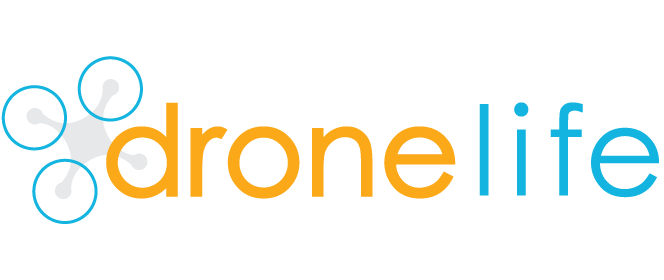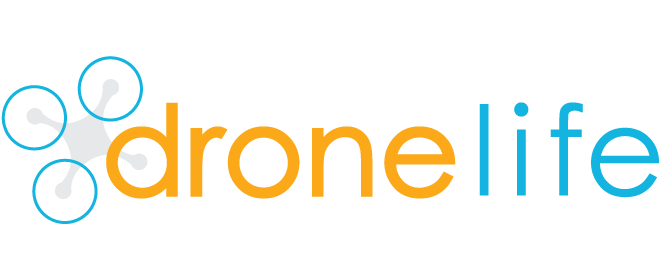
Imagine a world where drones are not limited by the constraints of natural light and adverse weather conditions. A world where low-light operations, such as filmmaking, surveillance, inspection, and search and rescue missions, are made possible with ease. Thanks to Immervision’s “Deep Seeing Technology,” this vision is becoming a reality. By combining specialist sensor technologies, such as LiDAR and advanced camera systems, Immervision is revolutionizing next-generation drone technology. The development of their wide-angle navigation camera, IMVISIO-ML, is already being embraced by drone manufacturers worldwide. With optics, image processing, and sensor fusion technology at its core, this innovative solution is expanding the capabilities and possibilities of drones like never before, even in the most challenging low-light and adverse weather scenarios. Get ready to navigate the unseen with Deep Seeing Technology.
Deep Seeing Technology: Revolutionizing Next Generation Drone Technology
Introduction to Deep Seeing Technology
Deep Seeing Technology is a groundbreaking innovation in the field of drone technology, developed by Immervision. This technology enables drones to operate effectively in low-light conditions, opening up a whole new realm of possibilities for various applications. By utilizing advanced camera modules and image processing techniques, deep seeing technology enhances the vision capabilities of drones, allowing them to capture clear, high-resolution images and videos even in challenging lighting situations.
Importance of Low-Light Drone Operations
Low-light drone operations are of utmost importance in a wide range of applications. Whether it is filmmaking, surveillance, inspection, delivery, or search and rescue operations, the ability to operate drones in low-light conditions can make all the difference. Filmmakers can capture stunning cinematic shots during dawn or dusk, creating visually captivating scenes. Surveillance operations can benefit from the ability of drones to monitor dark and remote areas without compromising image quality. Inspection tasks, such as inspecting infrastructure or monitoring wildlife, can be carried out more efficiently in low-light environments. Delivery drones can continue their operations during the night, ensuring fast and reliable service. Additionally, drones equipped with deep seeing technology can play a crucial role in search and rescue operations, where time is of the essence and visibility may be limited. By enabling drones to operate effectively in low-light conditions, deep seeing technology greatly expands the capabilities and applications of drone technology.

This image is property of dronelife.com.
Limitations of Specialist Sensor Technologies
While specialist sensor technologies, such as ultrasonic sensors and radar sensors, can augment drones for low-light operations, they have certain limitations. Ultrasonic sensors are primarily designed for object detection and obstacle avoidance. However, they are not suitable for capturing high-resolution images or videos in low-light conditions. Similarly, radar sensors are useful for detecting objects and identifying their distance, but their ability to capture detailed images or videos is limited. Additionally, both ultrasonic and radar sensors have range and resolution limitations, which can impact their effectiveness in low-light environments.
Advantages and Limitations of LiDAR Sensors
LiDAR sensors, specifically Time-of-Flight (ToF) and Frequency Modulated Continuous Wave (FMCW) technologies, offer several advantages for low-light operations. Unlike cameras, LiDAR sensors are unaffected by the absence of natural light, as they rely on emitting and detecting laser beams to measure distances. This makes them an ideal choice for capturing depth information in challenging lighting conditions. However, LiDAR sensors do have limitations. They can be bulky and have more power consumption compared to cameras, which can impact the overall weight and endurance of the drone. Moreover, LiDAR sensors may not provide the same level of resolution as cameras, which can affect the quality of captured images or videos.

This image is property of dronelife.com.
Advantages of Cameras for Low-Light Operations
Cameras offer several advantages for low-light operations, making them a compelling choice for drones. One of the key advantages is cost-effectiveness. Cameras are generally more affordable compared to LiDAR sensors, making them a viable option for drone manufacturers and operators. Additionally, cameras are lightweight, which helps in minimizing the overall weight of the drone and maximizing its flight time. Low power consumption is another benefit of cameras, allowing drones to operate for longer durations without the need for frequent battery replacements or recharges. Moreover, cameras can capture high-resolution images and videos, ensuring a clear and detailed visualization of the captured footage.
Determining Low-Light Camera Performance
Quantifying and comparing the performance of low-light cameras is a challenging task due to the subjective nature of human vision. However, there are methodologies that can provide a more deterministic and quantitative approach. One such method is the Harris detector model, which measures the image point response and provides a quantitative evaluation of low-light camera performance. Another approach involves the use of artificial intelligence (AI) models, which can analyze the captured images and videos to determine the level of visibility and image quality in low-light conditions. These methods can help drone manufacturers and operators assess and select the most suitable cameras for their low-light operations.
Factors Affecting Low-Light Camera Sensitivity
Several factors influence the sensitivity and capabilities of low-light cameras. The lens assembly plays a crucial role in gathering and focusing available light onto the sensor. The design and quality of the lens can significantly impact the camera’s ability to capture clear and sharp images in low-light conditions. Similarly, the sensor itself plays a vital role in converting light into electrical signals. Different sensor technologies have varying levels of sensitivity to light, which can affect the overall performance of the camera. Lastly, the image signal processor (ISP) processes the electrical signals from the sensor, further enhancing the image quality and minimizing noise. Optimizing these three elements, the lens assembly, sensor, and ISP, is essential to maximize the light sensitivity and overall performance of low-light cameras.
Immervision’s IMVISIO-ML Camera Module
Immervision, as a provider of Deep Seeing Technology, has developed an innovative camera module called IMVISIO-ML. This wide-angle navigation camera is specifically designed to operate in extreme low-light environments, making it an ideal choice for drones. The IMVISIO-ML camera module leverages Immervision’s expertise in optics and image processing to deliver exceptional performance in challenging lighting conditions. By integrating this camera module into their drones, manufacturers can enhance the vision capabilities of their drones and enable them to operate effectively in low-light scenarios. The IMVISIO-ML camera module is already being adopted by drone manufacturers, further revolutionizing next-generation drone technology.
Advanced Vision Systems for Low-Light Operations
Advanced vision systems, combining optics, image processing, and sensor fusion technology, are playing a pivotal role in expanding the scope of applications and improving the operational capabilities of drones in low-light conditions. By utilizing advanced image processing algorithms, these vision systems enhance the captured images or videos, ensuring optimal visibility and image quality. Sensor fusion technology enables the integration of data from multiple sensors, such as cameras and LiDAR, to provide a more comprehensive understanding of the environment. This integration further enhances the situational awareness and decision-making capabilities of drones. With the continuous advancements in deep seeing technology and vision systems, drones can now undertake complex tasks in low-light and adverse weather scenarios, making them invaluable tools in various industries.
In conclusion, deep seeing technology is revolutionizing next generation drone technology by enabling drones to operate effectively in low-light conditions. With applications ranging from filmmaking and surveillance to inspection and search and rescue operations, the ability to capture clear and high-resolution images and videos in challenging lighting situations is of utmost importance. While specialist sensor technologies have limitations, cameras provide several advantages, such as cost-effectiveness, lightweight design, low power consumption, and high resolution. Determining low-light camera performance can be challenging, but methodologies like the Harris detector model and AI models offer a more quantitative approach. Factors like the lens assembly, sensor, and ISP impact the sensitivity of low-light cameras. Immervision’s IMVISIO-ML camera module, specifically designed for extreme low-light environments, offers exceptional performance and is already being adopted by drone manufacturers. Furthermore, advanced vision systems combining optics, image processing, and sensor fusion technology are further expanding the capabilities of drones in low-light operations. Through the continuous advancements in deep seeing technology, drones are set to play a significant role in various industries where low-light operations are critical.

